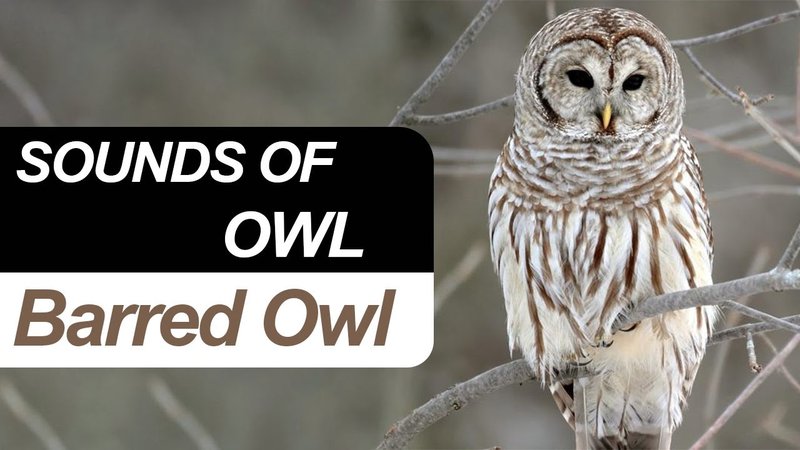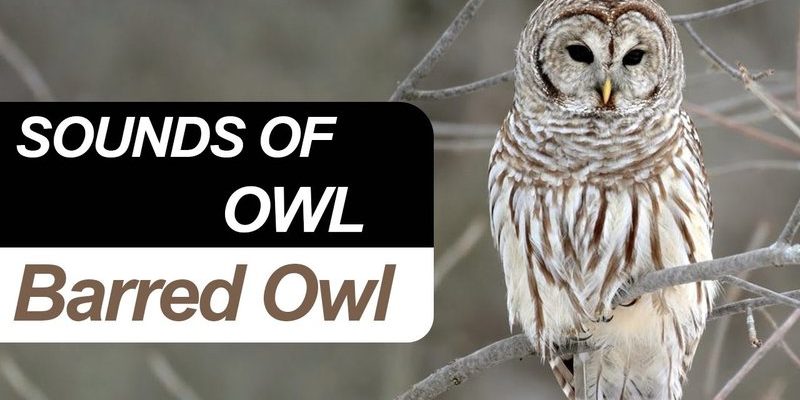
Think of the Barred Owl as the storyteller of the forest, vocalizing in a language that might be difficult for us to decode. Each hoot or call has its own meaning, much like how we use tone and inflection in our conversations. Let’s dive into the fascinating world of Barred Owl vocalizations, uncover their meanings, and explore how these beautiful creatures communicate in the wild.
Understanding Barred Owl Calls
Barred Owls are known for their distinctive, rhythmic calls often described as sounding like “Who cooks for you? Who cooks for you-all?” This memorable phrase captures the essence of their vocalization style. But why do they call out like this? Just like humans have conversations to share thoughts and ideas, Barred Owls use their calls to establish territory and communicate with each other.
These owls primarily call during dusk and dawn, a time when many animals are active. By vocalizing at these times, Barred Owls can announce their presence to potential mates or rivals. Their calls carry over long distances, making it easier for them to connect with other owls in their area. So, when you hear that characteristic hoot, it’s not just noise; it’s a form of language that serves a purpose in their world.
Common Vocalizations and Their Meanings
The Barred Owl’s vocalizations can be categorized into several types, each serving different communicative functions. Here’s a closer look at some of the most common sounds they make:
- Hoots: These are the classic calls we often hear. They are typically used to establish territory, signaling to other owls, “This is my space!”
- Chirps: Short, softer chirps often indicate a sense of disturbance or alertness. If you hear these, the owl might be on high alert, possibly from a nearby predator.
- Chortles: A series of rapid, low-pitched sounds, these calls are often associated with courtship. When mating season comes around, you might hear these more frequently.
Each call has its own rhythm and tone, allowing Barred Owls to convey different messages effectively. This intricate vocal communication is essential for their survival and social interactions.
Why Vocalizations Matter in Owl Behavior
You might be wondering, why do these vocalizations matter so much in the life of a Barred Owl? Well, vocalizations play a crucial role in their behavior and social structure. For starters, they help maintain territorial boundaries. By calling out, Barred Owls warn others to stay away from their nesting areas, ensuring they have adequate resources for raising their young.
Furthermore, vocalizations can strengthen social bonds between mating pairs. During the breeding season, vocal exchanges between partners can foster connection and mutual recognition. When one owl calls, the other often responds, creating a beautiful duet that resonates through the trees.
Finally, these calls can also serve as a warning system. If one owl senses danger, its calls can alert others nearby. This kind of communication is vital for survival, as it helps owls respond to threats from predators or other disturbances in their environment.
Listening to Barred Owls in the Wild
If you’re eager to hear Barred Owls in action, it’s best to go exploring during dusk or dawn when they are most active. Finding a quiet spot in a wooded area can enhance your chances of hearing their calls. Listen for that distinctive, rhythmic hooting, and pay attention to the responses from nearby owls. It can feel like eavesdropping on an enchanted conversation of the forest.
To really appreciate these vocalizations, try recording them if you can. There are also various apps available that can help you identify owl sounds. By comparing their calls, you can deepen your understanding of what they might be communicating at any given moment.
Here’s a tip: Try to remain as quiet as possible, as noise can disturb their natural behaviors. If you’re patient, you might even catch a glimpse of one moving through the trees, further enriching your experience.
Conservation and the Role of Barred Owls
Understanding Barred Owl vocalizations is not just fascinating; it’s also a crucial part of conservation efforts. These beautiful creatures play an important role in their ecosystems, controlling populations of small mammals and other prey. By listening to their calls and learning about their behaviors, we can become more invested in protecting their habitats.
As forests face threats from human activity and climate change, awareness of Barred Owls and their needs is essential. Knowing how to identify their calls can help bird watchers and nature enthusiasts contribute valuable data to conservation projects. Every little action counts in the fight to preserve these incredible birds and the environments they inhabit.
Final Thoughts on Barred Owl Vocalizations
The world of Barred Owl vocalizations is rich and full of meaning. Each call tells a story, serves a purpose, and connects the owls to each other and their environment. By understanding these sounds, we can foster a deeper appreciation for the natural world and advocate for the protection of these magnificent creatures.
So, the next time you hear that haunting call in the night, remember it’s not just noise. It’s a conversation, a declaration of territory, or even a sweet serenade between partners. Take a moment to listen and enjoy the symphony of the wild—it’s a beautiful reminder of the wonders of nature right outside our windows.

